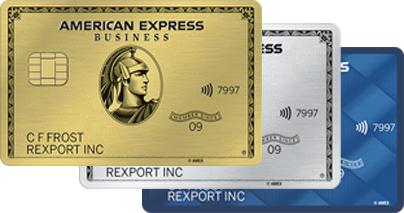
How to Manage Employee Credit Cards
By Megan Doyle | American Express® Freelance Contributor
5 Min Read | September 17, 2021
Summary
Employee credit cards can be an effective way to earn rewards while more efficiently managing travel and entertainment expenses, among other routine business purchases. But businesses usually have to carefully manage employee credit cards in order to get the most of them – and that process should start before issuing any credit cards to employees. It’s important to establish a well-defined policy for employees to read, agree, and sign before they get their cards.
Though every business will likely need slightly different guidelines, here are some key policy areas that are worth most businesses’ consideration:
- Card eligibility rules.
- Spending limits and approved charges.
- Expense report requirements.
- Repurcussions for card use violations.
- Who gets rewards.

Determine Employee Credit Card Eligibility
It may be the case that not everyone in your company will need an employee credit card. For many businesses, the common practice is to limit the number of credit cards issued to essential users. For example, trusted employees who take frequent business trips, entertain prospective clients, or regularly make equipment or supply purchases on behalf of the company are common employee credit card holders. Conversely, employees who never make company purchases may not need an employee credit card.
In addition to making sure that only those who need cards have them, setting up clear eligibility requirements can take the personal factor out of the equation. It’s less likely to affect morale if employees who are not granted cards clearly understand why.
Establish Approved Charges and Set Employee Card Spending Limits
Employee credit cards should be limited to specific spending categories. When establishing how to manage employee credit cards, include information on what types of purchases will and will not be covered by the business account. Generally, employee credit cards should be exclusively used for company expeses like supplies, equipment, flights, hotel stays, and entertainment and meals for prospective clients.
Though most business and corporate credit cards have an overall credit limit, it’s important to set specific limits for employees, too. For example, employees should know exactly how much they can spend on a room or the maximum they should pay for specific supplies before making the purchase. Similarly, it may be helpful to require approval for larger purchases. Include a standard operating procedure for how employees can request to make purchases above budget.
Outline Clear Employee Expense Report Requirements
It's common to ask employees to submit expense reports with receipts or invoices, as well as any other important purchase-related documentation. If your company requires expense reports, provide guidelines on exactly what information must be included and how often to turn in reports. To best manage company finances, it’s a good idea to strictly enforce expense report deadlines. This can help ensure accounting departments have the information they need to close the books every month.
Consider How to Handle Employee Credit Card Spending Violations
Trustworthy employees with cards issued in their names are unlikely to abuse the privilege. But mistakes can happen, and employees should know how the company will handle employee credit card violations. For example, routinely failing to turn in expense reports on time may be viewed as an employee credit card violation.
It’s up to the business to decide how to handle infractions and what repercussions to impose, which can sometimes vary with the nature of the business. A common practice for small mistakes is to ask the employee to repay the charge or make a note in their file. Big mistakes or repeat offenders may require more severe measures, such as involving the company's attorney, the police, and/or terminating employment.
It's a good idea to have your attorney read over the policy you mapped out to ensure that no policies, violations, or consequencies could present legal issues, and to identify loopholes that could potentially be used against the company.
Decide Who Gets the Rewards
Whether points, miles, cash back or other perks, rewards and card benefits are a major attraction for most business and corporate credit card users. But who gets the rewards? There are a few different options to choose from:
- Each card member keeps their rewards. The employee keeps the rewards earned by their transactions.
- Rewards are divided between the card member and the company. The employee keeps half or a preset percentage of the rewards, leaving the rest for the business to use as it sees fit.
- The company keeps the rewards. All rewards earned by using employee credit cards stay with the company and go toward company expenses. For example, miles may be redeemed toward business travel for any employee, not the one whose expense earned the reward. Or, the company might redeem rewards for gift cards to give to all employees.
In the end, how to distribute the rewards is the business owner's decision. All options have different benefits – for example, sharing rewards with employees increases morale, while keeping perks may reduce costs.
Other Important Employee Credit Card Management Tips
Beyond these policy guidelines, there are a few other tips to consider when managing employee credit cards:
- If you’re still shopping for a business or corporate credit card, consider card issuers with time-saving built-in features, like the ability to generate reports for each employee card, freeze and unfreeze employee cards, and categorize purchases.
- If you require employees to report expenses, routinely compare them to the automatically generated reports. Depending on the size of your business, you may wish to hire an account manager to monitor, review, and report any inconsistencies.
- Don't hesitate to update your guidelines annually, semiannually, or even quarterly if it makes sense. For example, you may wish to adjust spending limits based on quarterly financial reports. It’s important to clearly update any guidelines and have employees sign off on policy changes.

Business Credit Cards done right
From travel benefits to cash flow management, we've got a Card for you.






